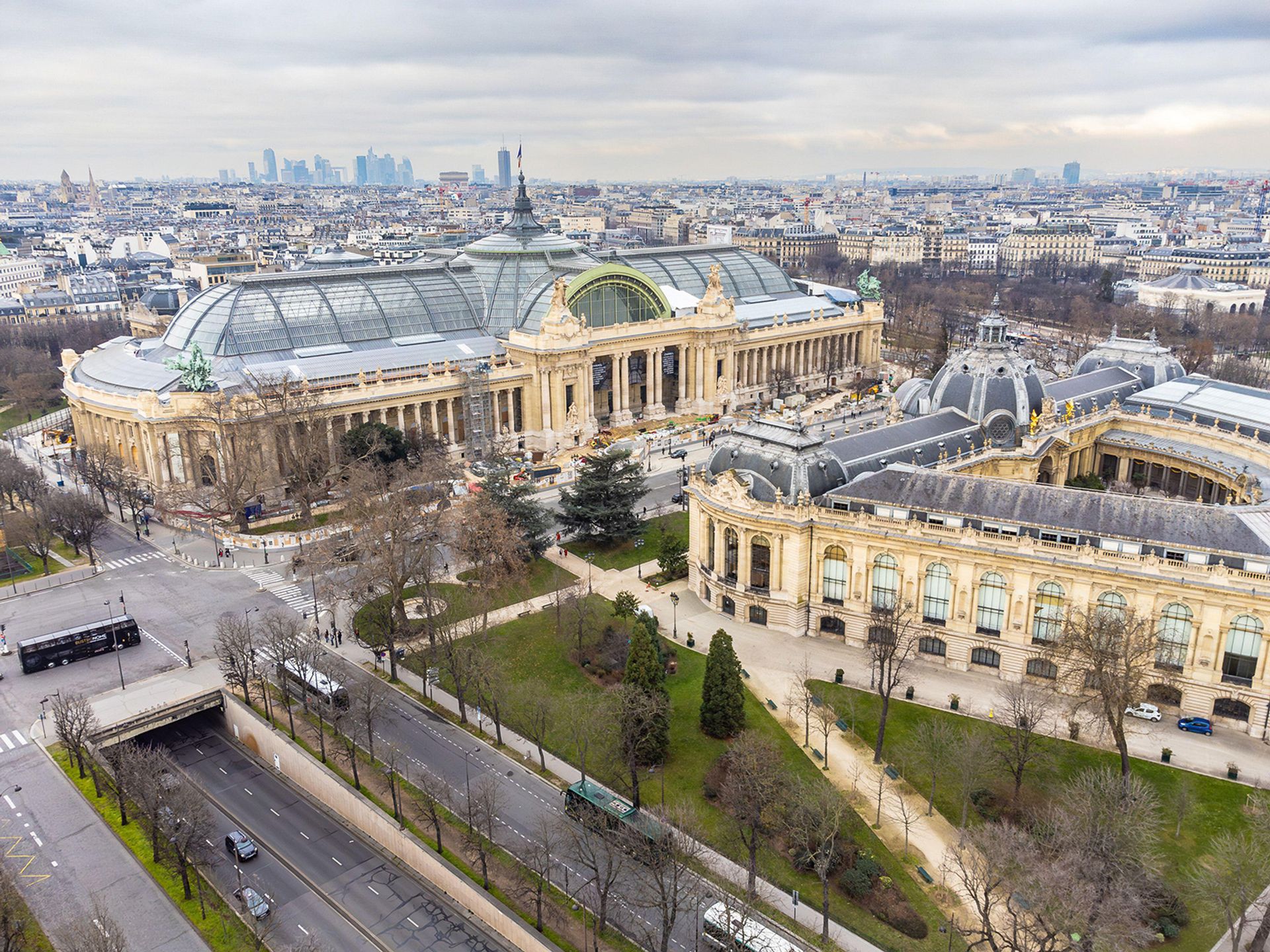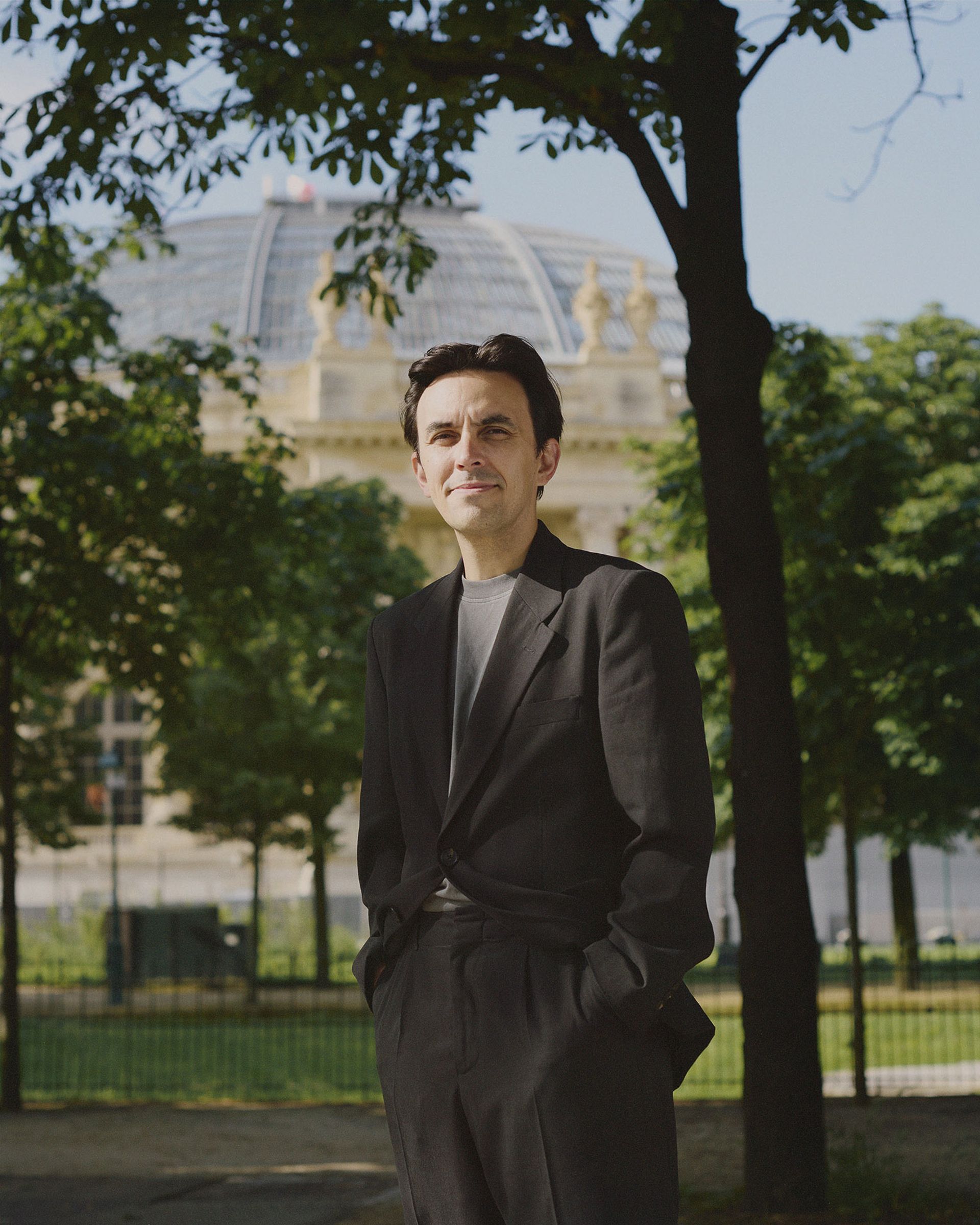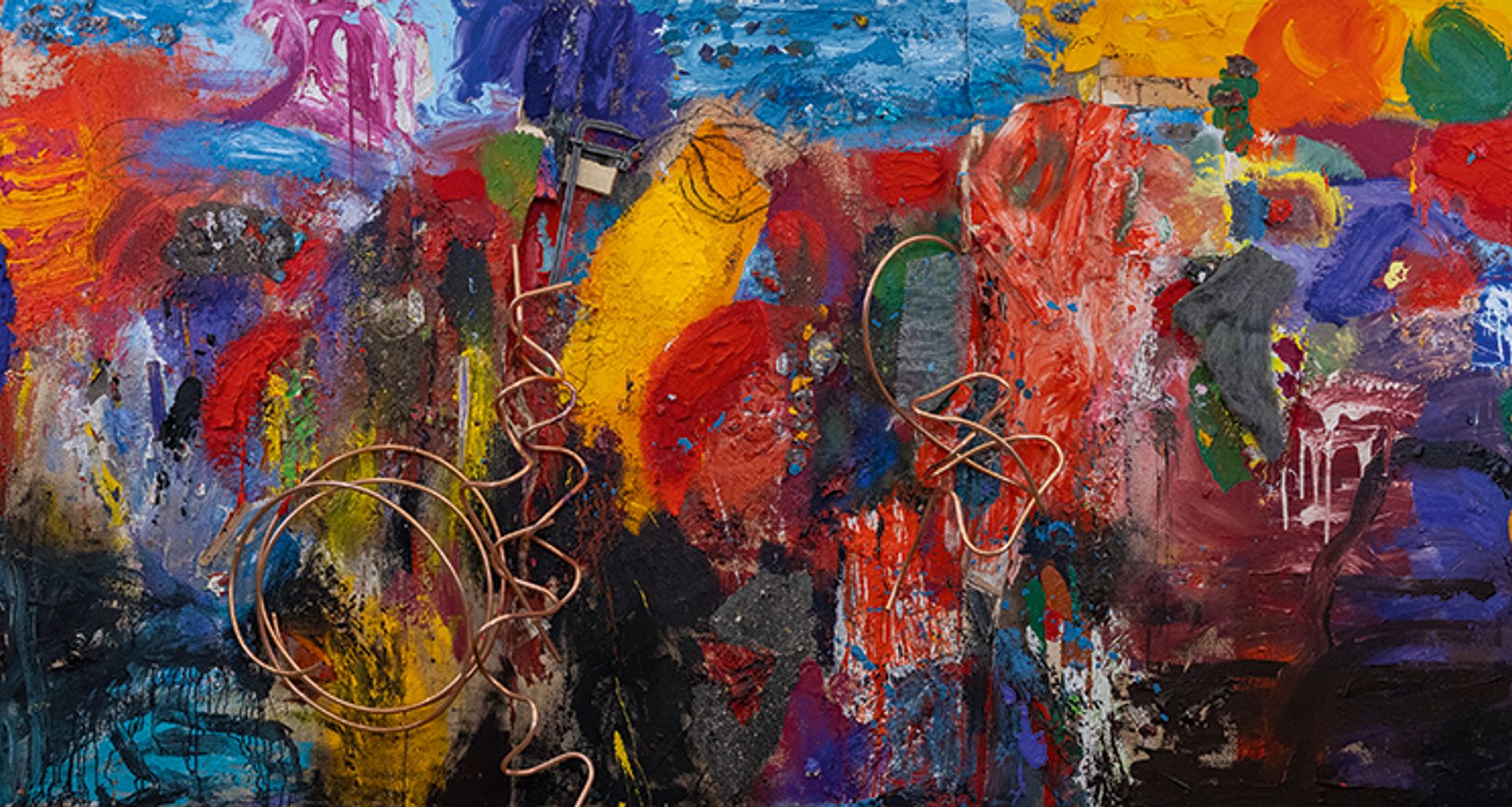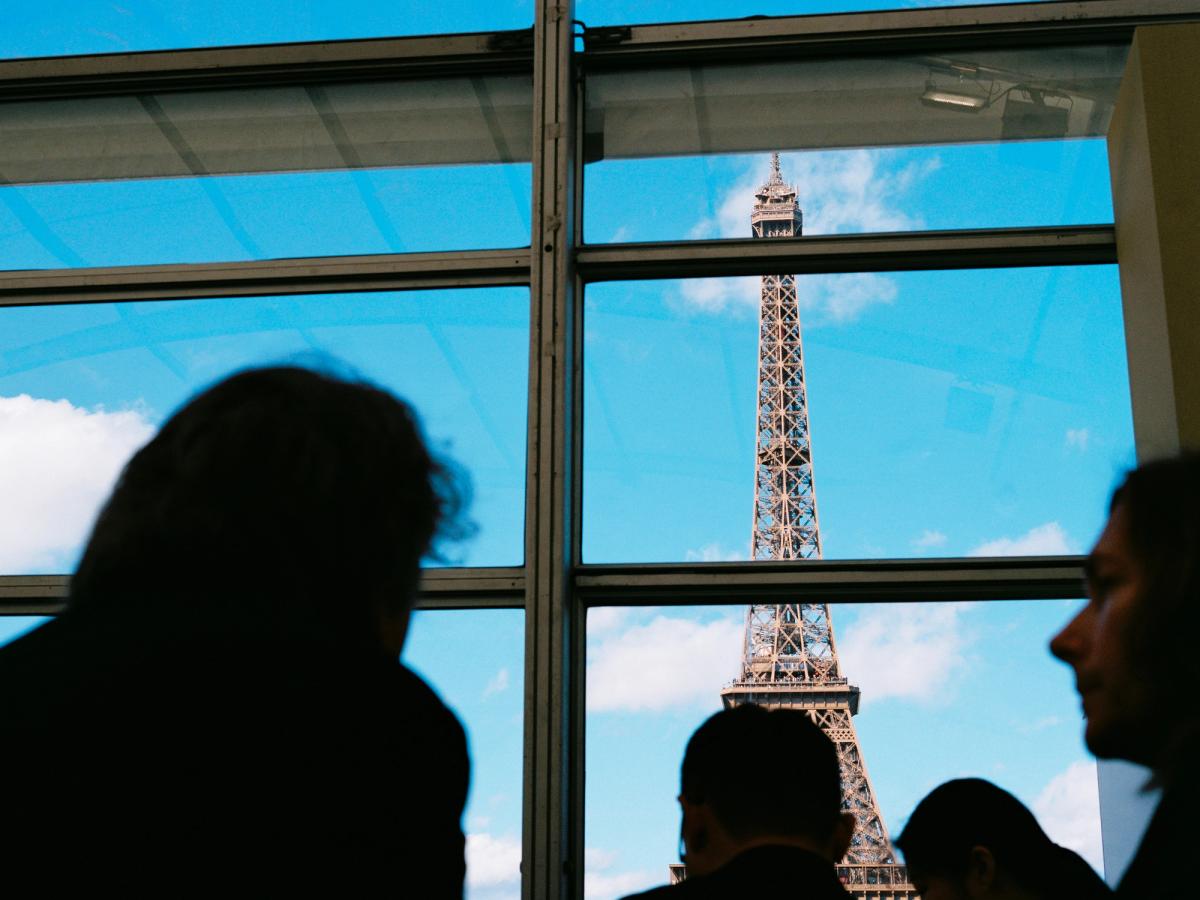“A new name, a change of size and space, the inauguration of the renovated Grand Palais, everything is new!” says Clément Delépine, the director of Art Basel Paris. “It rarely happens that a fair has to reinvent itself, and more rarely even that it reinvents itself twice in three years.”
From 18 to 20 October (with VIP preview days on 16-17 October), 195 galleries from 42 countries will present hundreds of millions of euros’ worth of works, mostly dated from 1900 on, at the third edition of Art Basel Paris—and the first edition to be staged at the historic Grand Palais. This year’s fair welcomes 41 more exhibitors than its predecessor in 2023. Of the full list, 124 dealers come from Europe, and 45 from the United States. Fifty-three are first-time participants, including the London-based Sprovieri Gallery, Johannesburg-headquartered Goodman Gallery and New York-based Di Donna Galleries.

An aerial view of the Grand Palais exhibition hall, which underwent a multi-year, €466m renovation AGSAZ/Alamy Stock Photo
Art Basel’s parent company, MCH Group, has been working toward this autumn’s iteration of the fair since taking over the coveted October dates at the Grand Palais—and with them, the mantle of the leading modern and contemporary art fair in Paris—from the 48-year-old Foire internationale d’art contemporain (Fiac) in January 2022. The latter fair had not been ageing well and had developed a chequered relationship with the leadership of the Grand Palais.
The 2022 and 2023 editions of MCH Group’s new event took place, under the name Paris+ par Art Basel, in the Grand Palais Ephémère, a smaller provisional structure next to the Eiffel Tower, while the Grand Palais underwent massive infrastructure and renovation work. As for the fair’s new title, Delépine says that “the exhibitors themselves clearly told us they wished to put forward the trademark Art Basel”, given its status as a marketable and well-established brand worldwide.

Red, Blue, & Black (Paris Series #4) (1989) by Ed Clark will be presented by Hauser & Wirth at Art Basel Paris Photo: Sarah Muehlbauer; © The Estate of Ed Clark; courtesy the Estate and Hauser & Wirth
The freshly renamed Art Basel Paris will be the first public event to be staged under the spectacular glass dome of the Grand Palais’s restored nave after the fencing and taekwondo competitions at this past summer’s Olympics. The French government has spent €466m to repair and renovate the monumental palace, which had suffered severe structural damage in the decades since being built for the 1900 Universal Exposition in Paris. The repairs have enabled the recovery of most of the original spaces; the restoration of the glass roof, statues and mosaics; and the installation of an “active flooring”—a slab that can cool or heat the space up to a height of two metres. Everyone involved recalls the freezing Christian Boltanski exhibition staged there in 2010, or the gala dinner for the antique dealers’ biennale where some participants fainted because of the extreme heat that had settled under Europe’s largest dome.
France front and centre
Sixty-four of the 195 exhibitors at the fair’s forthcoming edition maintain a permanent base in France, perhaps finally putting to rest the chief fear within the nation’s art trade after the announcement that MCH Group had displaced Fiac.
“It was a concern among art dealers, when Art Basel took over the fair, that it could minimise French participation, but the fears quickly dissipated,” says Kamel Mennour, the French dealer whose gallery, Mennour, now encompasses four locations in Paris. “The fair is definitely more dynamic and international. We have seen improvements in the organisation, with special attention paid to dealers’ requests, notably on conditions for receiving visitors.”

Clément Delépine, the director of Art Basel Paris: “It rarely happens that a fair has to reinvent itself, and more rarely even that it reinvents itself twice in three years" Photo by Matthieu Croizier; courtesy Art Basel
At his Art Basel Paris stand, Mennour plans to show pieces from artists including Anish Kapoor, Lee Ufan and Camille Henrot that relate to their respective participation in major museum exhibitions. Another Parisian dealer, Almine Rech, intends to exhibit an important painting from the estate of Tom Wesselmann, who is the focus of a blockbuster show opening at the Fondation Louis Vuitton on 17 October, along with works by Picasso.
The exhibitors clearly told us they wished to put forward the trademark Art BaselClément Delépine, director of Art Basel Paris
Like many exhibitors, Rech is expecting an increase in overseas visitors to the forthcoming fair. They have, she says, “all sorts of requests about current exhibitions, restaurants, hotels, fashion events. Clearly Paris has overcome the gloomy image of a city which lost its pre-eminence in the art world in favour of America”.
Price moves and programme proliferation
At €44, single-day ticket prices this year are up 10% over 2023. For the first time, an assortment of “premium” tickets will also be available, priced from €600 to €2,400 and granting perks ranging from the use of the VIP entrance and the Collectors’ Lounge to visits to private collections and artists’ studios. Delépine says that, with the transfer to the Grand Palais, the costs of the stands—ranging from €700 per sq. m to €965 per sq. m in the nave—have risen by around 15% depending on their size and location.

Mirrors and Masks (detail) (2023) by Kader Attia will be shown by the international gallery Lehmann Maupin. Its European director, Isabella Kairis Icoz, says coming to Art Basel Paris “is a significant investment ... but we have faith in a resilient market” Lucy Dawkins; courtesy the artist and Lehmann Maupin, New York, Seoul and London
“But, as in all Art Basel fairs,” he adds, “the pricing system follows a sliding-scale model, which is designed to benefit small and middle-sized galleries.” For instance, in the Emergence sector, for young galleries, the rate is a flat €9,800 per stand, a 50% discount on the price per square metre; in the new Premise section, for projects that challenge the art historical canon, the discount is 25%.
Two novel initiatives are planned to tickle visitors’ curiosity. For a programme called Oh La La!, 35 exhibitors will show a selection of rarely seen or otherwise remarkable works on Friday and Saturday, “energising the second half of the fair’s week”, according to a statement from Art Basel Paris. Nine galleries, all newcomers, will contribute to the Premise sector; stands there will include Galerie Dina Vierny’s tribute to the Paris-based German collector Wilhelm Uhde and Sies + Höke’s pairing of the photographic works of Sigmar Polke and Gerhard Richter.
“No other city offers such a rich cultural background, and that is especially important for clients from America or Asia,” says Mathieu Paris, the director of White Cube’s Paris location, which opened in 2020. “With major museums and foundations, the opening of numerous galleries in Paris, boosted by Brexit, and the rise of a new generation of French collectors, there is no doubt that Paris has been reinstated over the past six years or so as an epicentre of the world art market.” White Cube intends to show a selection of its artists, including Tracey Emin, Antony Gormley, Julie Mehretu and Mona Hatoum, as well as historical figures like Josef Albers, Lucio Fontana and Takis.

Jim Dine’s Clouds over Paris (2023), made with acrylic, copper tubing and objects on wood panel, is showing at Templon gallery, some of whose clients are prioritising Paris in their travel schedules Photo © artist’s studio
Séverine Waelchli, the director of Hauser & Wirth Paris, which opened in 2023, also sees in the fair “a major event, reinforcing our commitment there”. Its stand, she says, “will showcase artists who have links to Paris” including Louise Bourgeois, Alexander Calder and George Condo, as well as work by Barbara Chase-Riboud, whose pieces will be on view at the Louvre and seven other institutions in Paris.
In addition, Art Basel Paris is launching a public programme across nine locations in the city, establishing partnerships with the Petit Palais museum and the National Monuments Centre. Sculptures will be displayed across the Palais-Royal gardens, at the Maritime Museum, in the avenue separating the Grand Palais from the Petit Palais and at the Hôtel de Sully. In the Palais d’Iéna, built for the 1937 Universal Exposition, the fashion line Miu Miu will stage what is described as a “major project” centred on films and performances by women examining femininity, conceived by the London-based artist Goshka Macuga and organised by the director of the Barcelona Museum of Contemporary Art, Elvira Dyangani Ose.
Cautious optimism abounds
Despite a decline in auction sales, along with global uncertainty related to the wars in Ukraine and Gaza—not to mention the looming US presidential election—Vincenzo de Bellis, Art Basel’s director of fairs and exhibition platforms, remains “moderately positive” about exhibitors’ sales prospects in Paris. “The market is slowing down,” he says. “But I would not say it is shrinking, because we see so many new players around. Last year, the times were also very uncertain, but it did not prevent the sale of two Rothkos at the fair.”
Justine Durrett, the director of David Zwirner’snow five-year-old Parisian space, says she and her colleagues “expect a very strong fair”, adding that the mega-gallery was happy with last year’s results, when it “clocked up €20m in sales on the first day”. The stand will spotlight Marlene Dumas, but the gallery is also inaugurating a nine-month restoration and a 200 sq. m extension of its location in the Marais—“a strong sign,” she says, “of our confidence in Paris’s momentum”.
Lehmann Maupin, which is participating in Art Basel Paris after several editions of Fiac, shares that optimism. Isabella Kairis Icoz, who leads the gallery’s European programme, admits the fair is a “significant investment, in a challenging period, with the rise of shipping and other costs. But we have faith in a resilient market and the Art Basel brand”. The gallery’s stand will be among those highlighting multiple artists connected to current or recent exhibitions, including Kader Attia, Calida Rawles and Teresita Fernández.
“We have great expectations for this return to the Grand Palais,” says Anne-Claudie Coric, the executive director of Templon gallery, which will present works from the late French artist known simply as Ben, as well as Jim Dine and Alioune Diagne. “Many overseas collectors told us they postponed their trip to Europe, preferring this event to the fair in Basel. It now has to be translated into market dynamism.”
In this respect, some dealers believe, the simplest factor matters above all others. “Prospection and marketing are important,” says Almine Rech. “But at the end of the day, it is the quality of the works which will make all the difference.”


